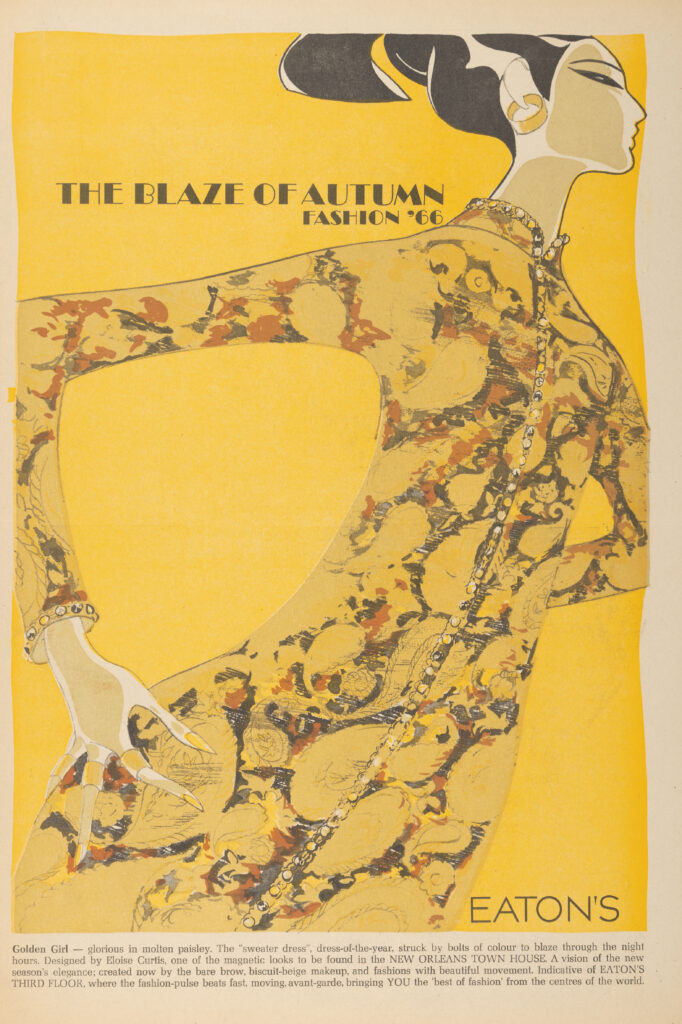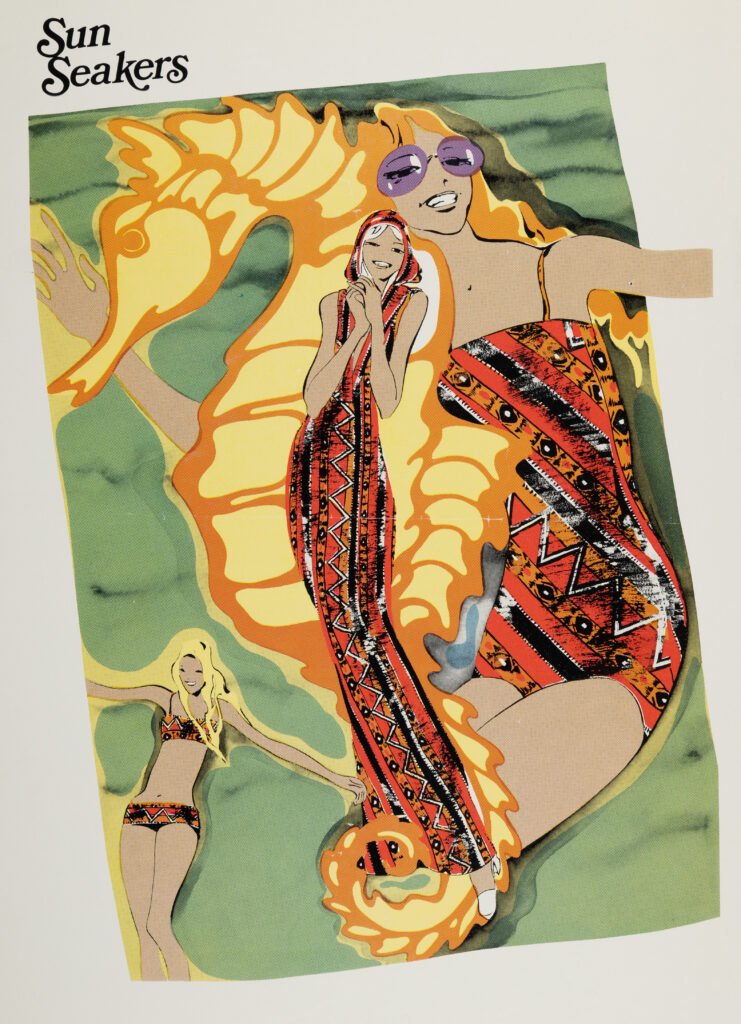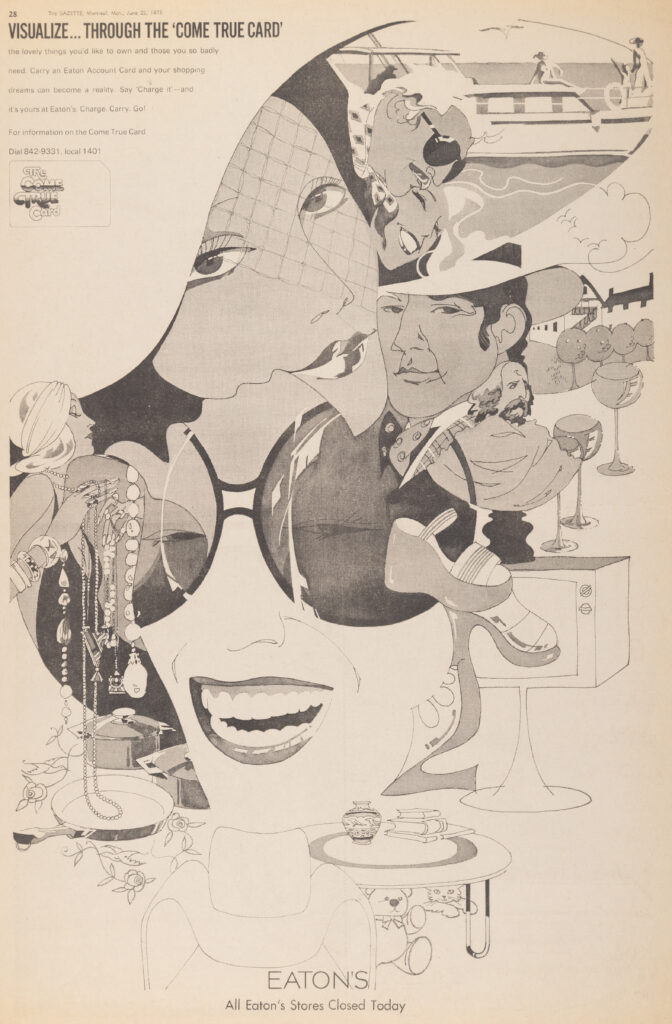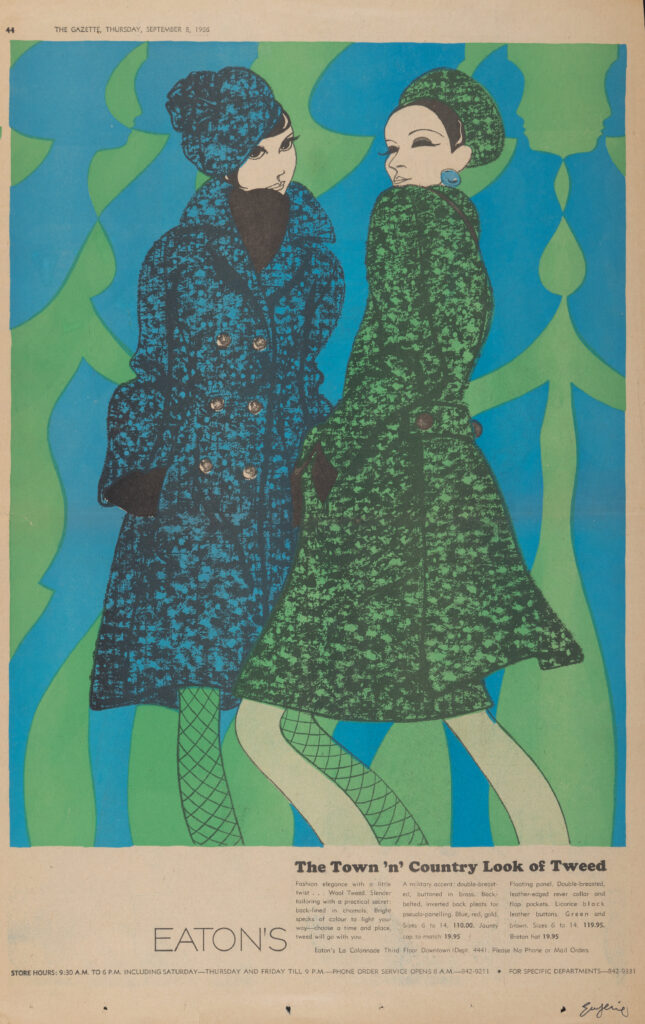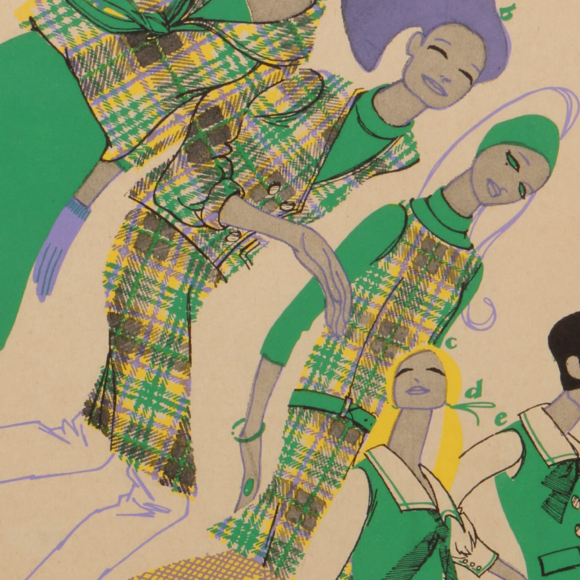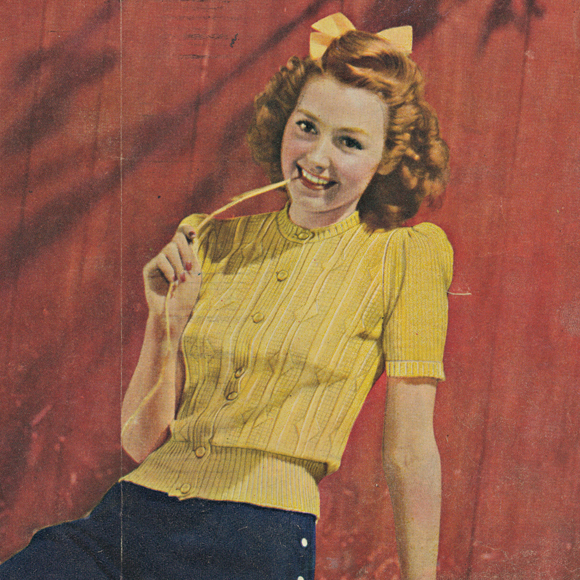Eugenie Groh
Born in Chrast, present-day Czech Republic, 1919 – Died in Montreal, 2017
1950 - early 2000s
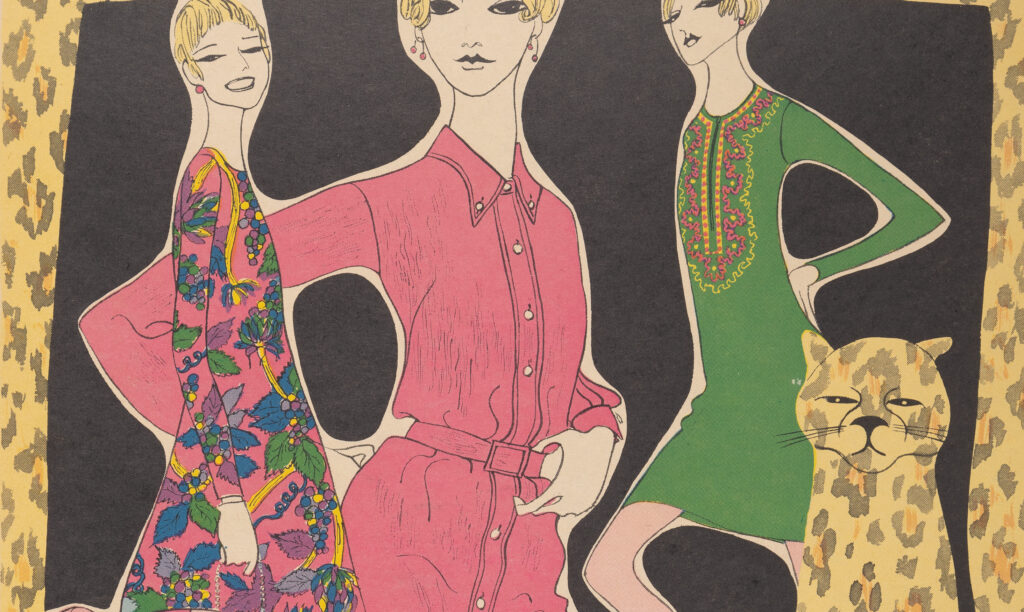
Eugenie Groh, The Coach House: a background of feline-inity... a fashion foreground of feminity (detail), 1960s. Gift of Catherine and John Tyhurst, M2017.114.183, McCord Stewart Museum
Eugenie Groh (née Juklicková) was a commercial artist and fashion illustrator, internationally renowned for her imaginative and innovative advertisements for Montreal’s downtown Eaton’s department store from the early 1950s to the early 1970s.
Discover Eugenie Groh’s fashion illustrations on
Online Collections
As a youth in what is now the Czech Republic, Groh had planned to attend the Academy of Fine Arts in Prague, but when the school closed during World War II, she turned to commercial art illustration at the Rotter School of Graphic Arts.
Following her studies, she was hired in 1943 by the art department at Melantrich, a large publishing house in Prague. After the war, she worked as an editor, writer and illustrator for Malé Mody, a Prague-based woman’s fashion magazine, which was closed in 1948 by the incoming Communist regime. Groh, her husband Jaroslav and her sister fled to Canada shortly after, in 1949.
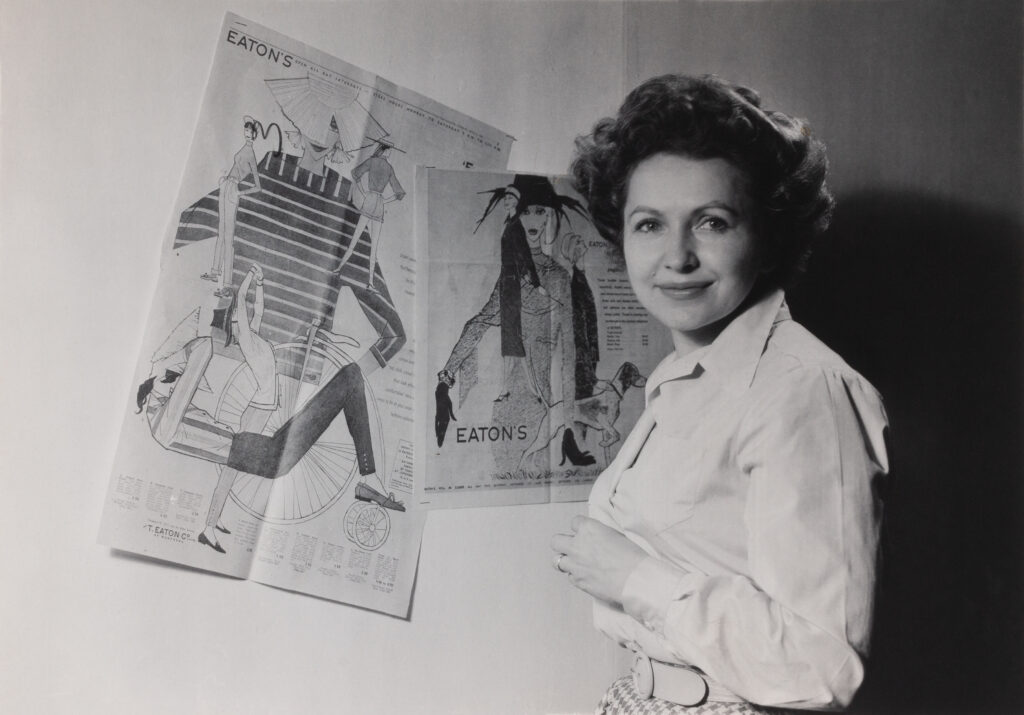
Photographer unknown, Eugenie Groh, Montreal, 1957. Gift of Catherine and John Tyhurst, M2017.114.2.7, McCord Stewart Museum
Within weeks of arriving in Montreal, Groh was hired by Eaton’s to illustrate advertisements for the department store, but was underwhelmed by the conservative style of Eaton’s ads at the time. Around 1952, working with Art Director Jack Parker and young freelance artist Georgine Strathy, Groh began to develop a new approach to advertising, inspired by Alphonse Mucha, the Art Deco and Art Nouveau styles, Abstract Expressionism, Japanese woodcut prints and the graphic ads of the Joseph Magnin department store in San Francisco.
The trio’s bold, colourful, stylish full-page ads were published weekly in The Gazette, in full colour.
From the mid-1950s to the early 1970s, the team won over eighty-four international awards and were the first Canadians to receive the prestigious New York Art Director’s Show award.
According to Strathy, Groh was sophisticated and chic, with fiery red hair and a penchant for calling everyone “pussycat.”
Eaton’s gave Groh a lot of freedom with her ads, and took advantage of her innate fashion sense. While most illustrators were given garments to illustrate every week, Groh was free to pick merchandise off the store floor that inspired her, and her choices often helped Eaton’s buyers anticipate future fashion trends. A prolific worker, she often took freelance jobs on the side and was extremely passionate about her art practice.
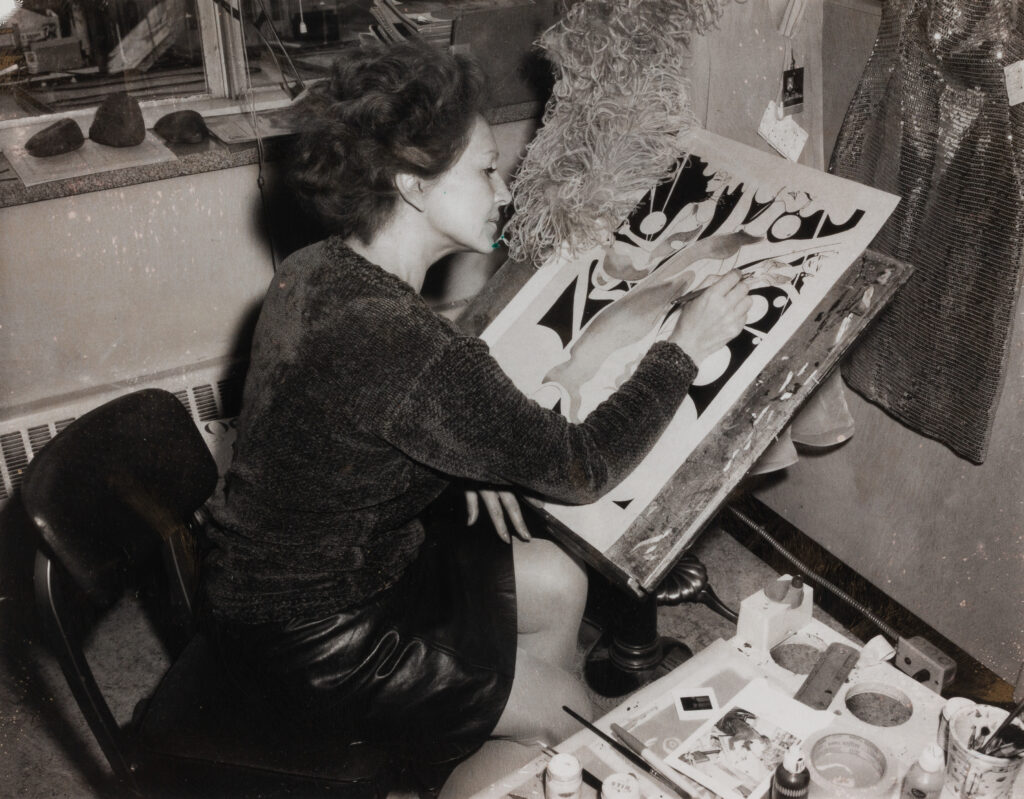
Photographer unknown, Eugenie Groh, Montreal, 1966. Gift of Catherine and John Tyhurst, M2017.114.2.20, McCord Stewart Museum
After more than 20 years at Eaton’s, Groh was made Fashion Advertising Co-ordinator at the department store, a post she did not enjoy as she found it too administrative and not creative.
She left her job at Eaton’s in the early 1970s, around the same time the art department finally closed.
Groh and her husband then moved to Toronto where she freelanced for Chatelaine and The Globe and Mail amongst others and taught at the Ontario College of Art and Design. When the couple returned to Montreal in the 1980s, she continued working from her Westmount apartment, frequently inserting her beloved cats into her commercial art, until her death in 2017.
Sources
Katherine Bosnitch. “A Little on the Wild Side: Eaton’s Prestige Fashion Advertising Published in the Montreal Gazette, 1952-1972,” in Fashion: A Canadian Perspective, edited by Alexandra Palmer, 339-363. Toronto: University of Toronto Press, 2004.
Bradford Mackay, “Who needs aubergine?” The National Post, November 6, 2000, D6.
Patricia Welbourn, “Darleeng, you’re a poosycat!” The Vancouver Sun Weekend Magazine, April 19, 1969, 98.
“Beauty Standards Change When Artist Arrives Here,” The Gazette, June 26, 1957, 9.
“Hard-Edge Abstractions,” Print, May 1, 1966, 53-54.
“Vivid drawings match Groh’s bubbly charm,” The Toronto Star, May 14, 1981, B9.
Interview with Georgine Strathy by author. Recorded phone conversation, June 2018.
Share
DownloadRecommended entries
© MCCORD STEWART MUSEUM 2024




